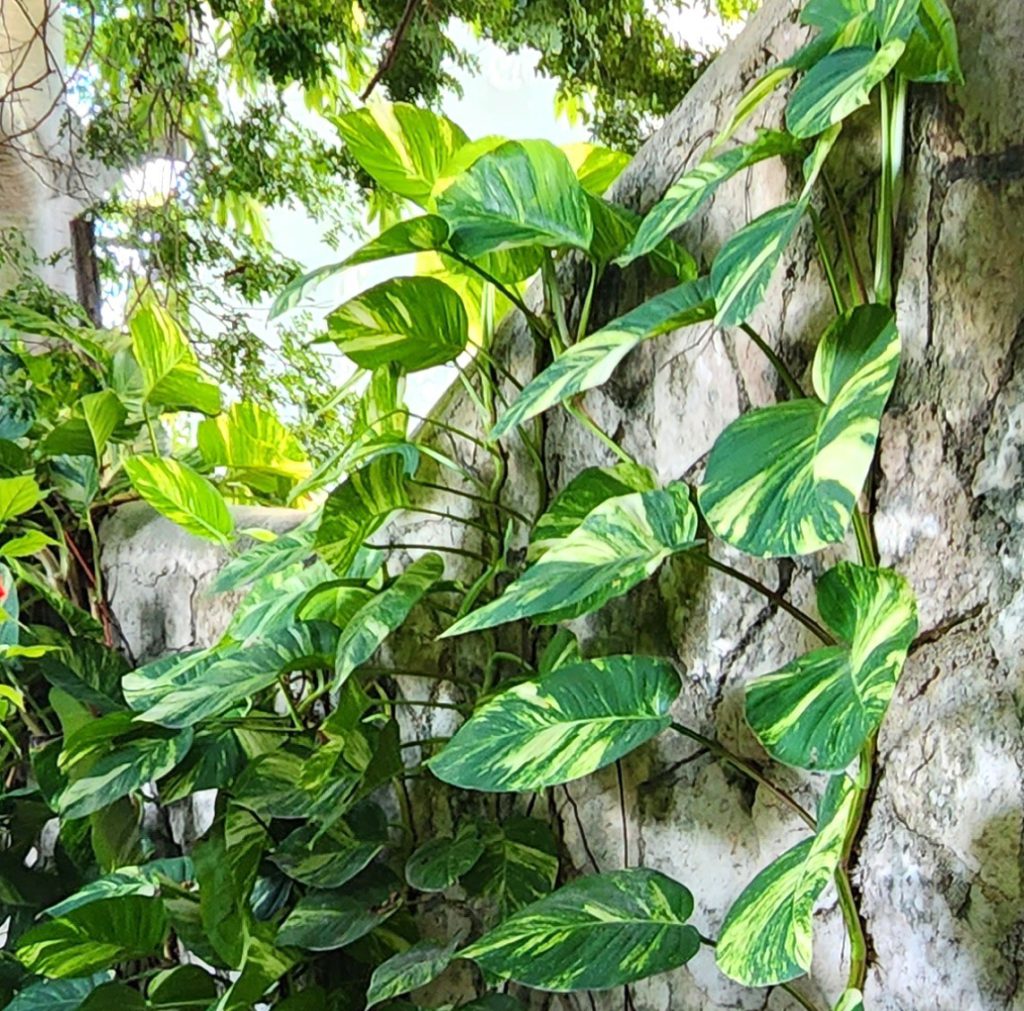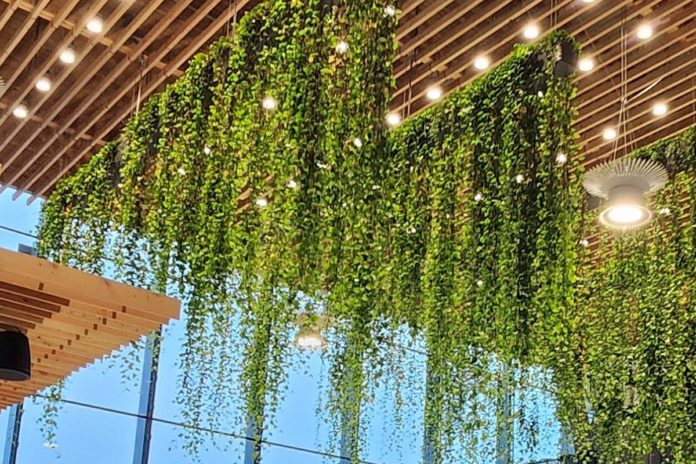Summer is rapidly approaching and so is the deadline for adding new plants to the garden. While planting can be done during summer, the timing isn’t ideal. High temperatures, prolonged sunlight, and drier soil and air make it harder for new plants to survive.
Summer, however, is a great time to get new houseplants. Brighter indoor light and warmer temperatures suit many indoor plants, which were most likely propagated in greenhouses. Pothos is one such plant.
Pothos is a popular houseplant and interior commercial-space plant that is native to tropical regions of the South Pacific and Southeast Asia. Epipremnum is the species of Pothos that is most commonly grown as an interior plant. It has heart-shaped leaves and vining growth.
There are numerous types within this species. They have differences in variegation, patterning and leaf colors. Many pothos types form a small compact bush at their base of only a foot or so, but will vary in vine length from a couple of feet long to over 20 feet long.
Pothos plants rarely flower indoors, so their popularity comes from different varieties and cultivars with foliage colors that include white, chartreuse, yellow and multiple shades of green
Pothos plants rarely flower indoors, so their popularity comes from different varieties and cultivars with foliage colors that include white, chartreuse, yellow and multiple shades of green. They are also chosen for their leaf patterns which include splotching and streaking of different colors as well as fenestrations, which are natural irregularly-shaped holes in the leaves.
Pothos are also favored for their luscious vines which can climb up a support or gently cascade from a hanging pot.
Although native to a tropical climate, pothos have an ideal temperature range of 60-85°F but can tolerate temperatures below 50°F for brief periods. They grow best in indirect medium to bright sunlight areas. They will grow in low-light areas, keeping a compact shape, but the vines will be lanky.
Pothos with a high percentage of non-green foliage will need bright light because of their reduced chlorophyll levels. Pothos grow well in slightly moist soil, but can survive for short periods of time if the soil dries out. They only need to be fertilized once or twice a year.
All parts of a pothos are poisonous when consumed by humans and domestic animals. However, their toxicity is not typically fatal and simply touching them is fine. A more positive trait is that pothos are one of the most effective indoor air-purifying plants.

Pothos also are easy to propagate by simply placing cut vines into moist soil in a warm location. Most stems will develop roots within a month. If a pothos is overwatered it has a natural process called gattation, where it can release excess water in tiny droplets from leaf tip structures called hydathodes.
Pothos are oftentimes mislabeled or confused with similar looking plants such as Philodendron or Scindapsus. Although they all belong to the aroid family, Araceae, they each belong to a different genus which means they have key botanical differences.
Philodendron leaves generally have a thinner and softer texture, while pothos leaves are thicker and waxier. Philodendrons tend to grow faster and taller than pothos. Scindapsus may have thicker leaves. The real difference is in the color of the foliage splotches. If the variegation or splotch is silver, then the plant is most likely a Scindapsus, not a pothos, even though the rest of the plant is almost identical to a pothos.
“Golden Queen” pothos is probably the most commonly seen in homes and commercial spaces. It has green heart-shaped leaves with golden-yellow variegation. “Golden Queen” is often called Devil’s Ivy because of its ability to thrive in challenging conditions and is a great plant for anyone who wants to grow interior plants successfully.
Pothos, the Greek God of longing, yearning and desire. The plant was named after him because he was said to carry a vine. It is so easy to be successful growing these plants that they may fulfill the longing, yearning and desire to have a green thumb.
“Marble Queen” pothos is another popular variety which is easy to grow as well. It has eye-catching green and white marbled foliage.
Other pothos varieties can be found in local nurseries and interior plant stores. “Neon” pothos has bright neon yellow-green foliage, and “Cebu Blue” has elongated leaves, much longer than other pothos varieties, that are a dark greenish-blue color and fenestrate as the plant matures. “Jade” pothos has glossy dark green leaves and is one of the fastest growing.
There is one more pothos worth mentioning: Pothos, the Greek God of longing, yearning and desire. The plant was named after him because he was said to carry a vine. It is so easy to be successful growing these plants that they may fulfill the longing, yearning and desire to have a green thumb.
Daniel O’Donnell is the co-owner and operator of an organic landscape design/build company in Fremont. Chrysalis-Gardens.com




